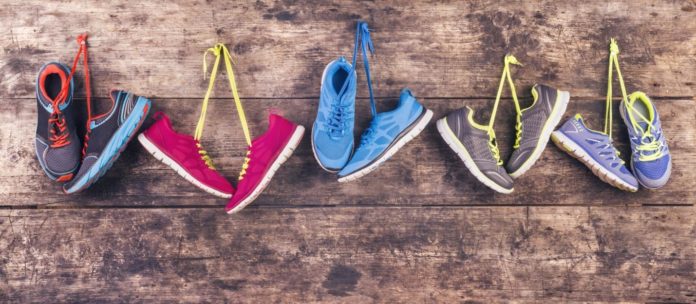Did you know that only 53.3% of Americans get enough aerobic exercise weekly? Aerobic exercise can reduce the risk of obesity, diabetes, high blood pressure, and heart disease.
One of the best aerobic exercises for your health is running. Running can boost your mood, allow you to build strong muscles, and improve your cardiovascular health.
While running has many benefits, it can harm your body if you don’t wear the right shoes. Are you ready to buy new running shoes? If so, keep reading to learn what to consider when buying running shoes.
1. Think About Where You Run
To find the best running shoes, the first thing you need to do is consider where you run. Do you prefer running on pavement or rugged trails?
Where you prefer running will determine the type of running shoes you need. Some common types of running shoes include road, cross-country, and trail running shoes.
The surface you run on will change the type of outsole your running shoe needs. When running on muddy and technical terrain, you will want shoes with deep lugs.
If you plan on running long distances on roads, you may prefer an outsole with lots of cushioning. If you are looking for a unique running shoe, you can try the Yeezy Foam Runner.
2. Know Your Running Style
Once you determine the terrain you prefer running on, the next step is to learn your running style. If you don’t find shoes that match your running style, you risk injuring yourself.
Some common running injuries include runner’s knee, stress fractures, and shin splints. One of the best ways to learn your running style is to get help from professionals.
Experts can help determine your pronation, which is how much your foot turns inward while running. The three types of pronation are basic, overpronation, and supination.
If you have basic pronation, it means that your feet roll in a normal amount, and you need to wear neutral running shoes. Overpronation happens when your foot rolls in more than normal, which puts you at a higher risk of injury.
For overpronation, it’s best to wear stability shoes. Lastly, supination happens when your foot rolls outward instead of inward. If your feet roll outwards, you may want to wear neutral shoes.
3. Find the Right Fit
When looking for quality running shoes, the fit is one of the most important factors. If your shoes don’t fit well, you could get blisters, bruised toenails, or a serious injury.
If it’s been a while since a professional has determined your shoe size, it’s a good idea to measure your feet before buying shoes. The right pair of running shoes won’t be too small but also won’t move around.
Your running shoes should have plenty of space in the toe box, be tight on your ankles, and be comfortable. Make sure you try shoes on at the end of the day because your feet swell during the day.
4. Determine How Much Cushioning You Want
Before choosing running shoes, determine how much cushioning you prefer. While some people prefer lots of cushioning to protect their joints, others prefer to feel the ground beneath them.
You can find running shoes with maximum, moderate, minimal, or barefoot cushioning. Running shoes with maximum cushioning will have a thick, foam midsole that feels squishy while running.
Running shoes with barefoot cushioning allow you to feel like you are running barefoot. While some people prefer barefoot shoes, it’s not recommended for new runners.
5. Don’t Focus On Appearance
One of the biggest mistakes people make when buying running shoes is focusing too much on appearance. While it’s nice to have a stylish pair of running shoes, that shouldn’t be your main priority.
When trying on running shoes, focus on how they feel and your running style. Once you find the shoe that feels the best, you can choose the best color variation of that shoe.
6. Try Different Insoles
If you never feel like your running shoes give you enough arch support, you should try inserting a different insole. An insole is the inside part of the shoe that has contact with your foot.
Most shoe insoles are removable, meaning you can take them out and insert different ones. If you find a running shoe that fits your foot and running style, but you want a different feel, a new insole may do the trick.
Some people that have high arches and flat feet need special insoles. If you have to wear a special insole, make sure it fits in your running shoes before buying them.
7. Test Out the Shoes
While a pair of running shoes may feel perfect in the store, they may not feel as nice once you start running. Before you leave the store with your new shoes, ask about the return policy.
Some running shoe stores have return policies that allow you to test your new shoes for a few weeks and return them if they don’t work. If the store doesn’t allow returns, you may want to avoid buying them there.
Some stores even have a treadmill in the store, so you can test out the shoes before buying them.
Are You Ready to Invest in New Running Shoes?
Running is a great way to improve your heart health, muscle strength, and bone density. If you are ready to start running, keep these tips in mind when buying new running shoes.
Did you enjoy reading this article on choosing running shoes? If so, check out the health category to learn more about staying in shape.




